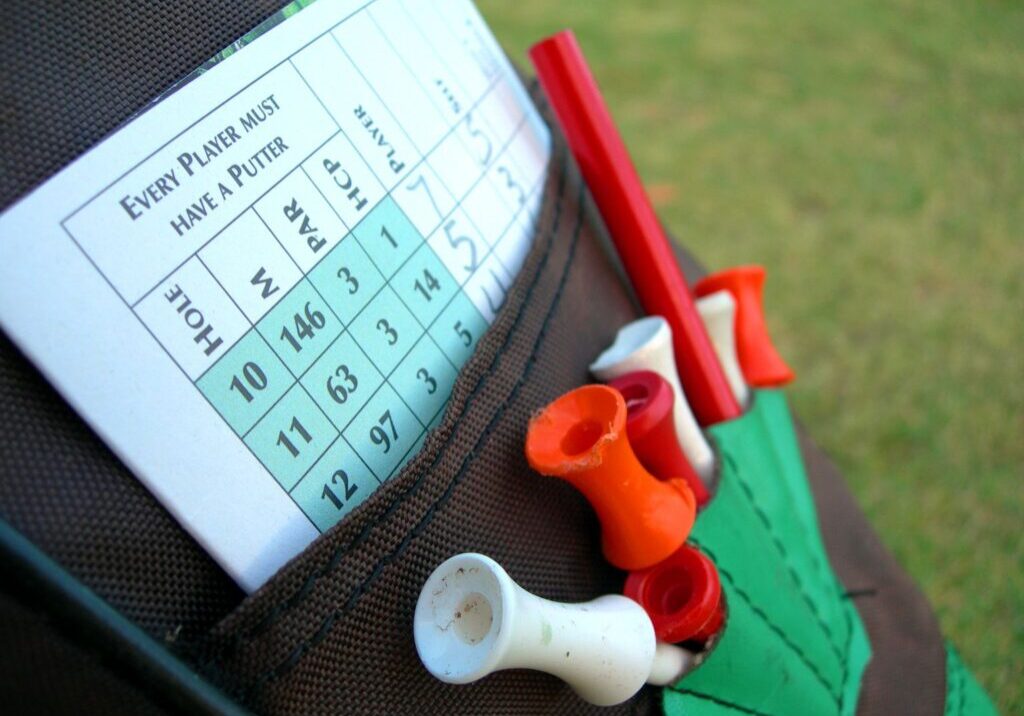How to Break 90 on the Scorecard

The First Barrier for Many Golfers is 90
Golf is a difficult sport to master. A perfect score would be 18 strokes. A hole-in-one on every hole (which we know is impossible due to the sheer length of Par 5’s). However, the first real accomplishment for many golfers is to “break 90” on the scorecard.
The Math Involved with Golf
As complicated as the game of golf seems, breaking 90 starts with a simple bit of math. Most courses are a par of 71 or 72 strokes. Therefore, to overcome a score of 90 and shoot an 89, a golfer must shoot about 17 or 18 strokes over par.
This is known as shooting bogey golf. This means the golfer shoots only one stroke more than the score that is allotted for each hole, on every hole.
In order to achieve this feat, you should likely be shooting in the mid to low 90s on a regular basis. Then, the goal just becomes management of the course and your shots. Here are 6 tips you can use to start breaking 90 on the scorecard.
1. Reflection
Reflection is the thing that separates novices from experts in nearly every subject of study and practice. Being able to go back and think about how you played your round of golf and what could be improved upon next round is a crucial aspect to lowering your score.
Once you have thought about areas of improvement, come up with a list of things you can work on to get better in those particular areas. Was it mostly short game that elevated your score? Plan to work on chipping. Too many putts? Hit the putting green for an hour next round.
Mapping out your plan of improvement will lead not only to greatness, but to lower scores.
2. Lean into Your Strengths
If there is an aspect of your game that is really top notch and next level, and doesn’t need much work, lean into that. Make it a pillar of stability throughout your round so that you can improve on some of the other aspects of your game.
If you have been hitting your irons well, but your driver is wild and all over the place, then consider hitting your 3 wood off the tee for the round until you can get more driver work in on the range.
If your long irons are failing you as of late, consider laying up short of the green and chipping to get up and down and make your par. Focus on your strengths while in the round, work on weaknesses after the round.
3. Analyze Your Scorecard
Your scorecard can tell you a lot after a round. Where did the big numbers occur? What was the cause of those big numbers? Was it a hazard, too many putts, or trying to recover from the rough too much due to errant tee shots?
If you can see where the big numbers occurred, you can try to avoid them in your next round. It is ok to fail, just as long as you learn from your failures so as not to make the same mistakes next round.
4. Don’t Get Penalized
Golf is a hard enough game without having to give yourself penalty strokes. Keep your scores low by avoiding penalties.
Don’t try to be a hero and dunk one or more balls in the water. Try to stay in the short grass and hit the ball relatively straight. If you can avoid Out of Bounds and Water Hazard penalties, it will save you a ton of strokes overall.
5. Don’t Worry About the Birds
Of course, birdies can help any golfers score out, but many times when we get into trouble and score a high number it is because we were so focused on trying to get it close and score that birdie.
Instead of just taking several boring, average pars, we think we need to go low with birdies and eagles. But again, if we look back at the math, we only need to play bogey golf to get to 89. So, stick to mostly pars and bogeys if you can, and you will be breaking 90 in no time.
6. Stay Golden Shorty!
The biggest difference between a 10 handicap and a 20 handicap is usually in the short game. So much of the short game and the chipping is about feel and repetitions. The more you practice it, the more you can just feel the right swing plane and the right touch around the green.
The quickest way you can shave stokes off your score card is around the green with improved chipping and putting. The more time and effort you put into practicing these two areas, the quicker the strokes will start fading off of your card.
Conclusion
In conclusion, if you have yet to break 90 on a round of golf, and you are looking to dip into the 80s, follow these 6 tips. Reflect on your prior rounds, lean into your strengths, analyze the math, avoid penalties, forget about the birds, and focus on the short game. Do these things and you will break 90 on your scorecard in no time. In the meantime, come try the Virtual Golf Machines at The Sand Trap.





